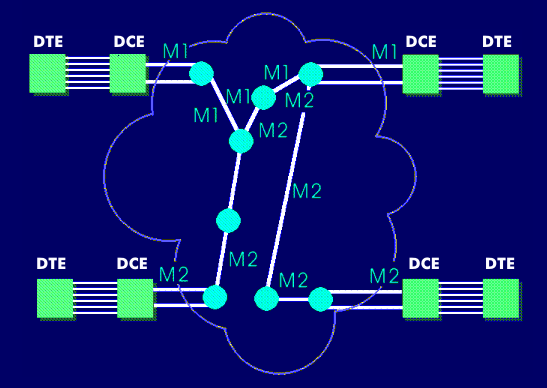message switching (MS)
In message switching, a message to be transmitted is handed over to the network, where it is forwarded to the recipient via various intermediate nodes using the store-and-forward method. The procedure does not use a provided physical connection and transfers the messages between the connected terminal devices by means of standardized transport units( data packets, cells, blocks, frames, etc.).
During message switching, the transport units are forwarded from network section to network section, with intermediate storage in each case, to the addressed terminal device. In each intermediate node the message is stored as a whole and after release of the next transmission section it is passed on to the following intermediate node. Because of the intermediate storage, this switching technique is also called memory switching.
According to the reservation of the resources involved in communication and the path selection of the transport units, message switches are distinguished between the two operating modes connection-oriented and connectionless switching. Since no direct connection establishment or termination is necessary, the possibility of creating a virtual connection between source and sink opens up. The message switching method requires delay times and the use of routing procedures.

